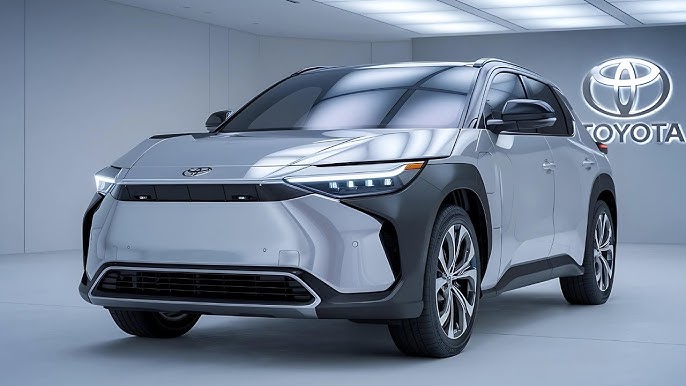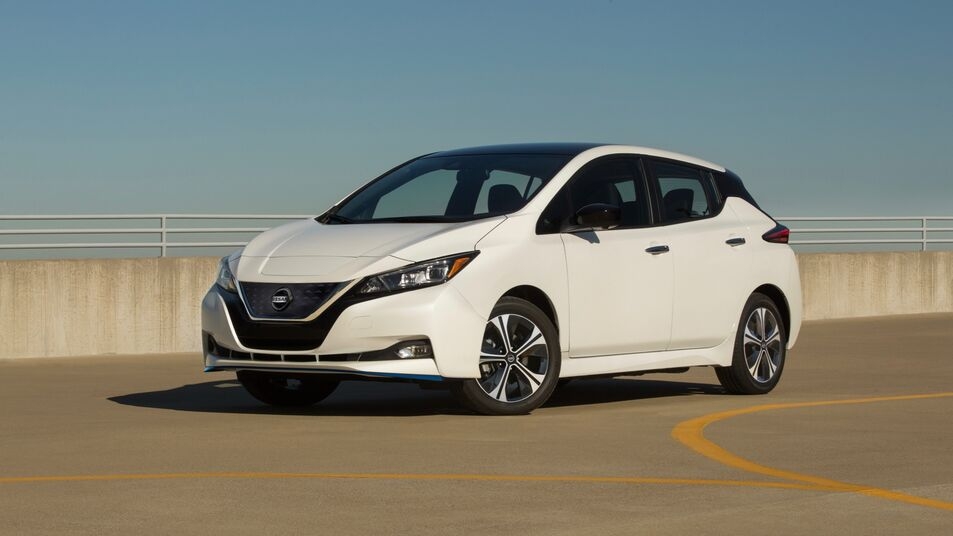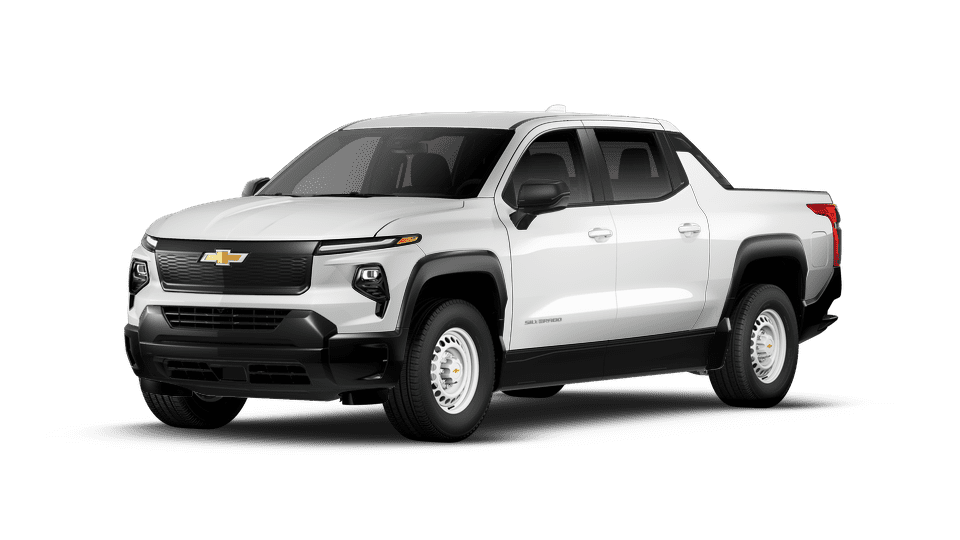Toyota is finally doing it.
After years of holding back in the all-electric race, the world’s best-selling automaker is rolling out what could be its most important EV yet: the 2026 Toyota bZ5X. Not just another compact electric experiment. Not a reworked gas model. This is Toyota’s first fully electric three-row SUV — and it might be one of the most practical EVs on the road in 2026.
The bZ5X is built for families, for long drives, for real-world use. And unlike some other flashy EVs that show up and disappear within two years, this one’s coming from a brand that knows how to scale and support a vehicle for the long haul.
Let’s get into everything you need to know.
Why the bZ5X Matters
Toyota’s slow start in the EV space wasn’t an accident. They’ve dominated hybrid sales for over two decades, and with more than 23 million electrified vehicles sold globally, they’ve taken a conservative, “wait-and-watch” strategy with full EVs.
That wait is over.
The bZ5X isn’t just another electric crossover. It’s the first proper answer from Toyota to what families actually want in an electric vehicle — room for seven passengers, real driving range, fast charging, and a nameplate they can trust. It’s a Highlander-sized EV with a flat floor, long wheelbase, and zero emissions. It’s also one of the first Toyotas designed entirely as an electric vehicle from the ground up, built on the e-TNGA platform developed for EVs only.
This isn’t just a compliance car or an EV with training wheels. It’s Toyota finally entering the real game.
Size and Design: A Highlander in EV Clothing
Physically, the bZ5X is close in size to the current Toyota Highlander. That means three rows of seating, generous cargo space, and the footprint of a real SUV. But it looks cleaner, smoother, and more modern. There’s no massive grille up front — just a streamlined “hammerhead” face with slim lighting and a closed-off panel where the grille would be.
The hood is lower than in a traditional gas SUV, the beltline is clean, and the roofline stays high enough to give all three rows decent headroom. The rear is squared off just enough to keep cargo room usable without going full minivan.
Toyota kept the styling conservative — intentionally. This isn’t a cyberpunk experiment. This is an EV that’s meant to look like something you’d actually buy, park in your driveway, and drive daily. It looks like a car Toyota would sell — and for most buyers, that’s a plus.
Power and Performance: It’s Quick Enough to Surprise You
Toyota will offer the bZ5X in both front-wheel-drive and all-wheel-drive configurations. The FWD model will likely be a single-motor setup delivering modest horsepower, aimed at maximizing range and affordability. But it’s the dual-motor all-wheel-drive version that really changes the tone.
Toyota claims the AWD bZ5X will produce up to 338 horsepower, making it the most powerful Toyota SUV outside of the Sequoia or performance TRD models. That’s enough grunt to get the 3-row SUV from zero to 60 in around 4.9 seconds — fast enough to surprise passengers and pass effortlessly on the freeway, even when loaded with kids and cargo.
Torque is expected to be strong from a standstill, as with most EVs, and the dual-motor layout gives the bZ5X better traction in snow or wet weather, a clear advantage for drivers in colder climates or mountainous regions.
Platform and Driving Dynamics: Built Electric from the Start
Unlike some other Toyota models that adapt existing platforms for EVs, the bZ5X is built on the dedicated e-TNGA electric vehicle platform. That means the battery is mounted low in the chassis, the weight distribution is optimized, and the suspension is tuned specifically for the electric layout.
The result? A flatter ride, tighter cornering, and a more planted feel than you’d get in a traditional body-on-frame SUV. Even better, because the battery sits under the floor, there’s no transmission tunnel eating into legroom. That gives the second and third rows a lot more usable space.
Toyota says noise, vibration, and harshness (NVH) have also been minimized. With no engine up front, road noise is more noticeable in some EVs, but the bZ5X uses extra insulation and a new subframe design to keep things quiet inside. That means more comfort on the highway and less fatigue on long trips.
Battery Options and Real-World Range: Up to 314 Miles
Toyota will offer two battery packs depending on the trim:
- The standard battery is a 57.7-kWh pack aimed at FWD buyers looking for a lower-cost, city-focused model.
- The larger pack is a 74.7-kWh unit paired with AWD, offering the longest range.
The AWD extended-range version is expected to achieve up to 314 miles on a full charge, based on Toyota’s internal estimates. That’s competitive with other midsize EVs like the Hyundai Ioniq 7 and Kia EV9, and more than enough for most families to make long weekend trips without hunting for chargers.
Toyota has also hinted at improved battery longevity, using a high-nickel cathode and active thermal management systems to ensure consistent performance over the long haul. That should mean better resale value and lower degradation over time — something Toyota already excels at with their hybrid batteries.
Charging Tech: Finally, Toyota Joins the Supercharger Club
For 2026, Toyota is finally adopting the North American Charging Standard (NACS), which means future bZ5X models will be able to plug directly into Tesla Superchargers. This is a massive win for buyers, instantly giving them access to the largest, most reliable charging network in North America.
Other charging highlights:
- DC Fast Charging: Charges from 10 to 80 percent in around 30 minutes with a high-speed CCS or NACS plug.
- 11-kilowatt AC onboard charger for fast Level 2 home charging, fully recharging overnight.
- Plug & Charge functionality, allowing you to plug in and automatically initiate charging and billing with participating networks.
By 2026, nearly every major automaker will have NACS support. Toyota joining the club means bZ5X buyers won’t be stuck using slow, unreliable charging stations.
Interior Features and Comfort: Family-First Design
Toyota designed the bZ5X cabin for comfort, clarity, and space — not flash. It avoids the minimalism-for-the-sake-of-it trend that’s hit some competitors.
Inside, you’ll find:
- A 14-inch center touchscreen that controls navigation, climate, audio, and vehicle settings.
- A separate digital instrument cluster behind the wheel with customizable layouts.
- Wireless Apple CarPlay and Android Auto standard on all trims.
- High-quality synthetic materials throughout.
- Optional panoramic sunroof and ambient lighting with multiple zones.
- Power-adjustable heated and ventilated seats up front.
- Third-row seating suitable for kids and smaller adults.
- Flat load floor and wide tailgate opening for easy cargo loading.
- Hidden under-floor storage in the trunk for cables and valuables.
Toyota’s layout is clean, logical, and familiar. Nothing here feels like it was built just to be different — it was built to be used.
Tech and Infotainment: It’s Finally Caught Up
Toyota’s infotainment used to lag behind competitors. That’s changed with the bZ5X. The new interface is quick, responsive, and supports voice commands with natural speech. Over-the-air updates will improve and add features over time.
Key tech features include:
- Over-the-air updates for infotainment and vehicle software.
- 360-degree camera view and parking assist.
- Advanced driver monitoring with facial recognition and attention alerts.
- Full suite of USB-C and wireless charging options in every row.
- Digital key capability using your smartphone.
Everything works without being flashy. It just works — and in a family vehicle, that’s what matters most.
Toyota Safety Sense 3.0: Standard on Every Trim
The bZ5X comes standard with Toyota’s latest Safety Sense 3.0 system, which now includes improved sensors, radar coverage, and lane-tracking ability.
Safety features include:
- Full-speed adaptive cruise control with lane tracing.
- Lane departure warning and active lane keeping.
- Pre-collision system with pedestrian and cyclist detection.
- Blind spot monitoring and rear cross-traffic alert.
- Emergency stop assist.
- Road sign recognition and intelligent speed assist.
Toyota’s driver assistance systems are among the most consistent and conservative in the business. They’re not designed to replace the driver — they’re built to assist them safely.
Trims and Pricing: What You’ll Pay
Official pricing hasn’t been released yet, but based on Toyota’s typical structure and the features offered, here’s what we expect:
- LE FWD – Starts around $48,000
- XLE AWD – Likely starts around $54,000
- Limited AWD with extended range – Around $58,000 to $62,000
That puts the bZ5X squarely against rivals like the Kia EV9, Hyundai Ioniq 7, and upcoming Chevy Equinox EV three-row variant.
Toyota’s advantage will be resale value, long-term support, and nationwide dealer service.
What We Think
Toyota took its time entering the electric SUV race. But the 2026 bZ5X shows they weren’t just waiting — they were watching, learning, and planning something that could actually last. And this might just be the most sensible EV launch of the year.
With real-world range over 300 miles, access to the Tesla Supercharger network, room for seven, and Toyota’s unmatched reputation for reliability, the bZ5X isn’t built to win Instagram. It’s built to work — for families, for commuters, for road trippers, for everyday life.
If you’re looking for a gimmick-free, dependable electric SUV that doesn’t ask you to compromise on size, support, or comfort — this one deserves a test drive.
It’s not late. It’s right on time.
Check back at BidForAutos.com for our full road test, charging performance deep dive, and resale value forecast on the 2026 Toyota bZ5X as soon as it hits the streets.








